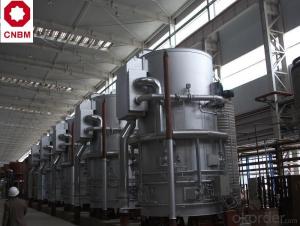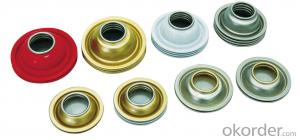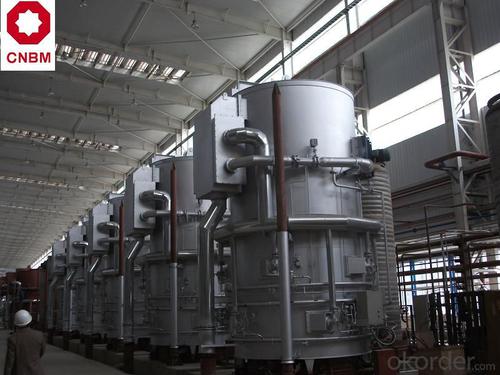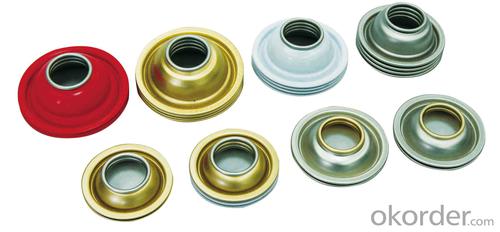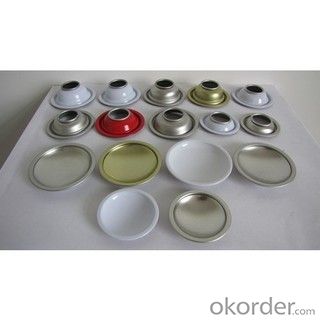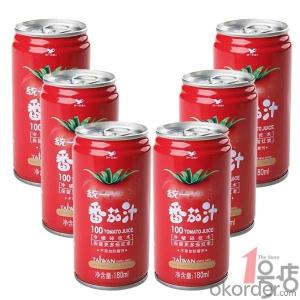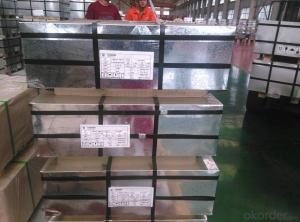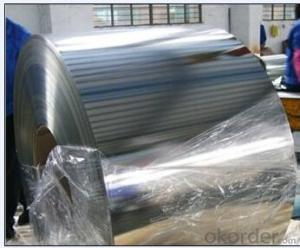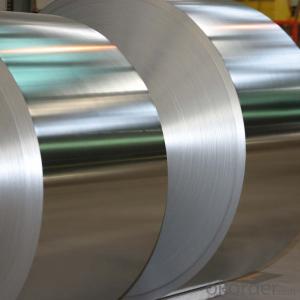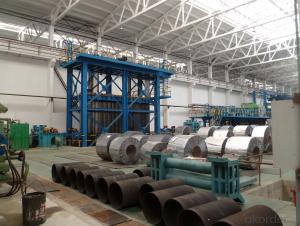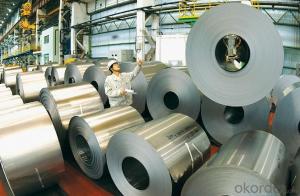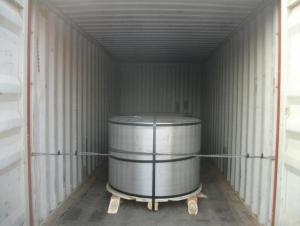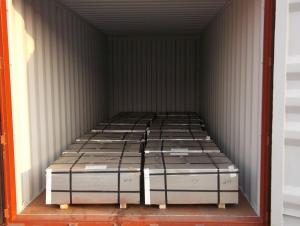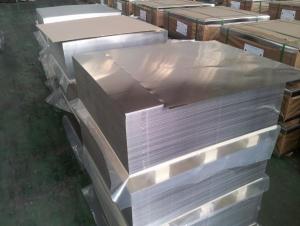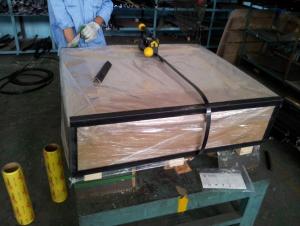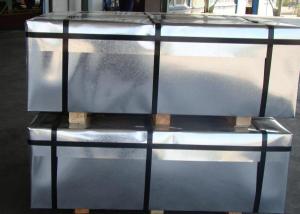SPCC/MR Material Tinplate, Single Reduced For Chemical Cans,
- Loading Port:
- China main port
- Payment Terms:
- TT OR LC
- Min Order Qty:
- 25 m.t.
- Supply Capability:
- 40000 m.t./month
OKorder Service Pledge
OKorder Financial Service
You Might Also Like
1.Usage
Tinplate is widely used for making all types of containers, containing industrial usage such as paint can, oil can, aerosol cans etc., and food cans like milk powder cans, tomato paste can, dry food cans etc.
2. Quality
As a state owned company and a large tinplate supplier in China, our tinplate quality ranks 1st level in China, similar to Bao Steel, Posco etc.
3. Specification
standard: GB/T2520, JIS G3303, DIN EN10202
Material: MR /SPCC
Thickness available: 0.16-0.50MM
Width available: 600~1050MM
Temper grade: T1 – DR8
Tin coating: ordinary 2.8g/2.8g, 5.6g/5.6g and others
Package: sea worthy export package.
Applications: Tin can for chemicals & paint cans, industrial cans, food cans
4. Our factory photo & equipments

5. Our Markets:
now our tinplate has been sold to more than 50 countries, including Europe country, Gulf Area, South American, South Afric etc.
6. Our Overseas Wareouses:
Furthermore, in the year 2014, we have more than 10 overseas warehouses all over the word, located in KSA, UAE, Oman, Russia, Kuwait, Qatar, Oman, Chile, Brazil etc.
7. FAQ
a. what's the annual output?
about 500,000 tons per year.
b. where's the raw matrial from?
our hot rolled coil is purchased from Capital Steel and other state owned mill, with quite good quality.
c. how long is the delivery time?
normally for SPCC about 45~55 days, while 65~75 days for MR material
d. how to control the quality during production process?
inside our workshop, we have MES syestem. It realizes the optimization of the production procedure in the workshop. It could record each step of the whole production procedures, and if some problem appears, factory could easily found and take action, it’s quite helpful to monitor and control the quality.
- Q: How does tinplate packaging contribute to product protection against breakage?
- Tinplate packaging contributes to product protection against breakage by providing a strong and durable barrier that can withstand external pressure and impact. The rigid nature of tinplate makes it resistant to deformation and ensures that the packaged product remains intact and secure during transportation and handling. Additionally, tinplate packaging offers excellent resistance to moisture, corrosion, and temperature changes, further safeguarding the product from damage.
- Q: How is tinplate coated for promotional items?
- Tinplate is typically coated for promotional items through a process known as electroplating. This involves immersing the tinplate in an electrolyte solution and passing an electric current through it, causing a layer of tin to deposit onto the surface. This coating not only enhances the appearance of the promotional items but also provides protection against corrosion and improves their durability.
- Q: How does tinplate contribute to the safety of aerospace components?
- Tinplate contributes to the safety of aerospace components by providing a protective barrier against corrosion and oxidation. This helps to preserve the integrity and longevity of these components, reducing the risk of failure or malfunction during flight. Additionally, the smooth and uniform surface of tinplate reduces friction and wear, ensuring optimal performance and reliability in critical aerospace applications.
- Q: Can tinplate be used for luxury packaging?
- Yes, tinplate can be used for luxury packaging. Tinplate is a versatile material that offers excellent durability, strength, and aesthetic appeal. It can be easily shaped, printed, and decorated to create luxurious packaging designs, making it a popular choice for high-end products. Additionally, tinplate provides effective protection against moisture, light, and other external factors, ensuring the preservation and presentation of luxury goods.
- Q: What are the welding methods used for tinplate?
- The welding methods commonly used for tinplate include spot welding, seam welding, and resistance welding.
- Q: How is tinplate recycled?
- Tinplate is recycled through a process known as steel scrap recycling. First, the tinplate is collected and sorted. Then, it undergoes a shredding and melting process to separate the steel from other materials. The melted steel is purified and refined, removing any impurities. Finally, the purified steel is used to produce new tinplate products, completing the recycling cycle.
- Q: How is tinplate coated with anti-tarnish materials?
- Tinplate is coated with anti-tarnish materials through a process called tinplating, where a layer of tin is electroplated onto the surface of the tinplate. This tin layer acts as a protective barrier, preventing the tinplate from coming into direct contact with the atmosphere and preventing tarnish formation. The tinplating process ensures that the tinplate remains corrosion-resistant and maintains its appearance over time.
- Q: How does tinplate packaging contribute to product reusability?
- Tinplate packaging contributes to product reusability by providing a durable and long-lasting container that can be reused multiple times. Its sturdy construction ensures that the packaging remains intact even after repeated use, making it ideal for storing and transporting various products. Additionally, tinplate packaging can be easily cleaned and sanitized, allowing it to be used for different purposes without compromising the quality of the contents. This reusability reduces the need for single-use packaging materials, thus minimizing waste and environmental impact.
- Q: Can tinplate packaging be used for gift items?
- Yes, tinplate packaging can be used for gift items. Tinplate is a durable and visually appealing material that can be used to create unique and attractive packaging for various gift items. It offers excellent protection for the contents and can be customized with different designs and finishes to enhance the overall presentation of the gift.
- Q: What are the recycling processes for tinplate?
- The recycling processes for tinplate typically involve collecting and sorting the tinplate materials, removing any contaminants, such as paper or plastic coatings, and then shredding the tinplate into small pieces. The shredded tinplate is then melted in a furnace to separate the steel from the tin. The steel is recovered and can be used to make new tinplate products, while the tin is commonly reused in various applications or sold as a raw material.
Send your message to us
SPCC/MR Material Tinplate, Single Reduced For Chemical Cans,
- Loading Port:
- China main port
- Payment Terms:
- TT OR LC
- Min Order Qty:
- 25 m.t.
- Supply Capability:
- 40000 m.t./month
OKorder Service Pledge
OKorder Financial Service
Similar products
Hot products
Hot Searches
Related keywords
